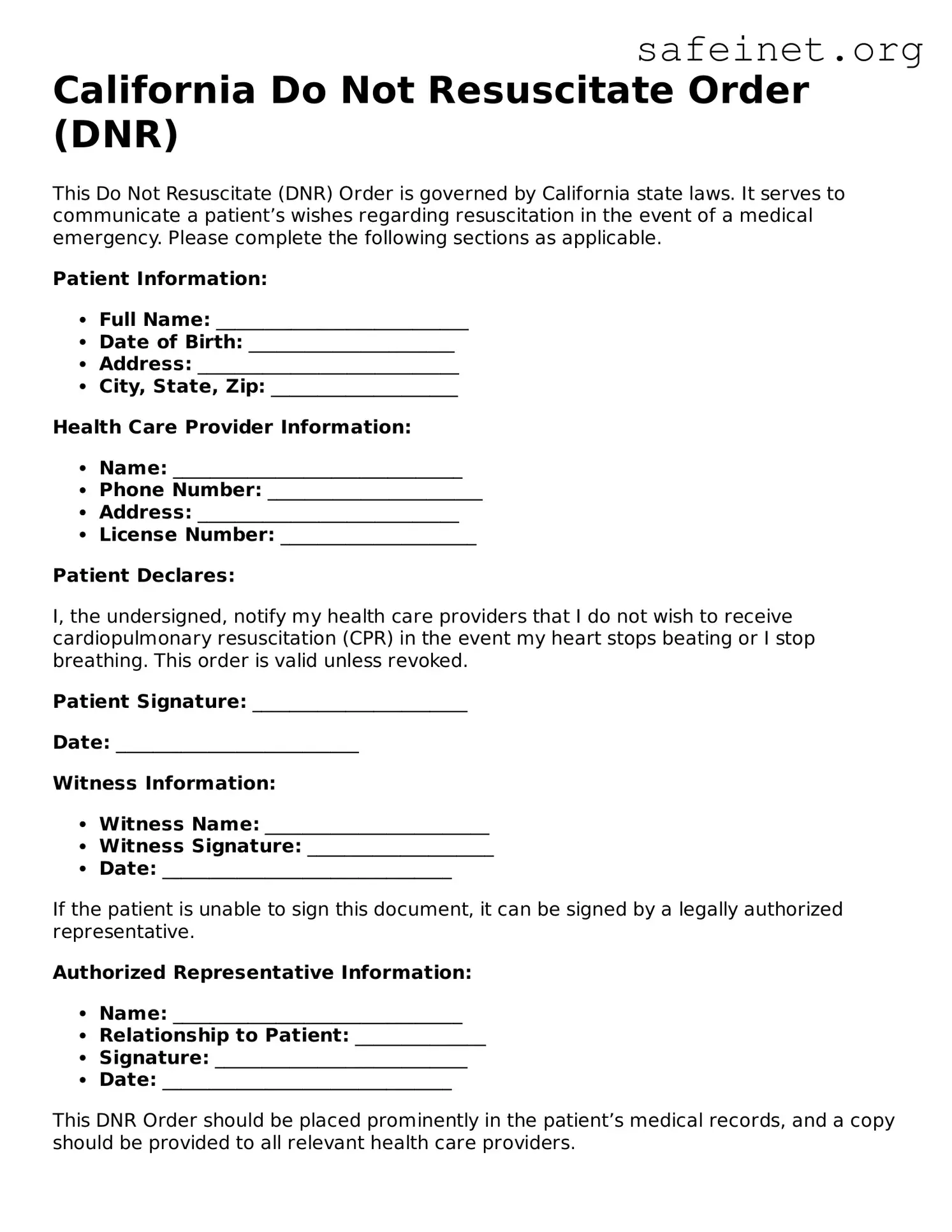What is a Do Not Resuscitate (DNR) Order?
A Do Not Resuscitate Order is a legal document that indicates a person's wishes regarding medical care in the event of cardiac arrest. It instructs healthcare providers not to perform CPR or other resuscitative measures, allowing for a natural death without invasive medical interventions. It is crucial for individuals to discuss their wishes with family and healthcare providers to ensure their preferences are documented appropriately.
Who can request a DNR Order in California?
In California, a DNR Order can be requested by anyone who is an adult and of sound mind. Additionally, parents or legal guardians can request a DNR for a minor. It is often recommended that individuals approach their healthcare providers to initiate the process, ensuring their choices are respected and accurately reflected in their medical records.
How do I obtain a DNR Order form in California?
You can obtain a DNR Order form from a variety of sources, including hospitals, clinics, or your physician’s office. Additionally, the California Department of Public Health provides downloadable forms online. It is essential to ensure that the version you obtain is up-to-date and correctly fills out to comply with the state’s regulations.
What steps should I take to complete a DNR Order?
First, ensure discussions are held with your healthcare provider about your wishes and the implications of a DNR Order. Complete the form, providing accurate personal information and preferences. Once filled out, the form must be signed by both you and your physician. It is advisable to share copies of the signed form with family members, your healthcare team, and any primary caregivers.
Will my DNR Order be recognized in all healthcare settings?
Yes, a DNR Order completed in compliance with California law should be recognized by all healthcare providers across various settings, including hospitals, nursing homes, and home care services. However, it is crucial to maintain copies of the DNR Order readily accessible and to inform all healthcare providers of its existence to avoid any confusion during a medical emergency.
Can I change or revoke my DNR Order after it has been made?
Yes, an individual maintains the right to change or revoke a DNR Order at any time, as long as they are of sound mind. To do so, notify your healthcare provider, and be sure to destroy any copies of the previous DNR form. It's important to create and distribute a new DNR Order form to ensure that your updated wishes are clearly communicated to all relevant parties.
What should I do with my DNR Order once it is signed?
Once your DNR Order is signed, you should keep it in a safe, easily accessible location. Inform family members, friends, and caregivers about its whereabouts. It may also be beneficial to carry a wallet card indicating the existence of the DNR Order, as this can be particularly helpful in emergencies.
How does a DNR Order interact with other advance directives?
A DNR Order is one component of advance healthcare planning, which may also include a living will or a healthcare power of attorney. It specifically addresses resuscitation wishes, while other directives may outline overall medical treatments and decision-making preferences. It is wise to ensure all forms are consistent and clearly express your healthcare wishes to avoid any potential conflicts or confusion.
